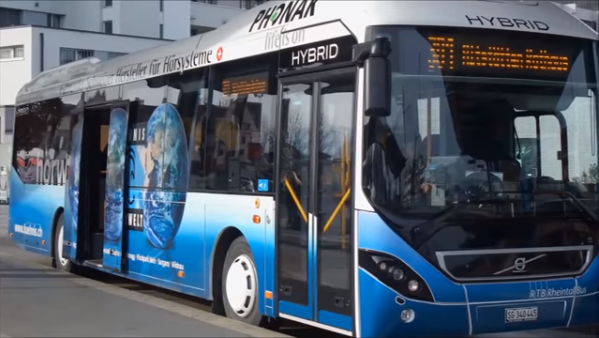The engines are cooling on a long debate over bus rapid transit (BRT) routes in London, now that local politicians have made their final vote on preferred lines for $440-million project.

During a full council meeting Tuesday night, councillors adopted recommendations from Monday night’s Strategic Priorities and Policy Committee meeting: to scrap a contentious 900-metre tunnel below Richmond Street, to choose Richmond as the preferred northern corridor, and to divide the east-west leg with a couplet on King Street and Queens Avenue.
And it’s a far cry from some of the original visions for the city’s biggest-ever project, which started out in the fall of 2015 as a bus rapid transit/light rail transit (LRT) hybrid system, with a $880-million price tag.
READ MORE: Timeline: London bus rapid transit
“It can be very demoralizing, quite frankly, to have the project go from LRT/BRT hybrid… down to only a BRT with a tunnel, down to a BRT with no tunnel,” said Ward 4 Councillor Jesse Helmer, who has long been a proponent of rapid transit in the city.
The debate about Tuesday night’s decisions came largely during Monday night’s committee meeting, which included discussion about staff recommendations last Friday to scrap the tunnel when its capital cost estimate rose from $90 million to $170 million.
READ MORE: Staff recommending Richmond St. BRT corridor without tunnel, King/Queens couplet

Get breaking National news
At the time, staff also pointed to Richmond Street as the best location for the plan’s northern corridor because it would serve a greater number of riders, while suggesting the King/Queens couplet for mitigating impact to local businesses and easing traffic and parking congestion concerns.
As approved, the 24-kilometre system will run on L-shaped and 7-shaped corridors that stretch north along Richmond Street up to Masonville Place, south on Wellington Road down to White Oaks Mall, west to the intersection of Oxford Street and Wonderland Road, and east through to Fanshawe College.
In lieu of the tunnel below Richmond Street — proposed as a solution for delays caused by the CP rail line — council also approved an at-grade crossing where rapid transit buses will be forced to wait for trains to pass by. On Monday night, LTC General Manager Kelly Paleczny agreed there would be delays, but that workarounds would be part of discussions moving forward.
READ MORE: New survey suggests majority of respondents opposed to BRT plan
As for next steps, staff will prepare an updated rapid transit master plan and business case during a Strategic Priorities and Policy Committee meeting on July 24. The city will also be looking for a combined $310 million in funding from its federal and provincial counterparts for the now $440-million project, with the municipal contribution capped at $130 million.
“Today’s a new day,” said Ward 6 Councillor Phil Squire, telling colleagues he’d spent the better part of Tuesday on the phone with unhappy constituents.
“Whatever we voted on, we’ve got to make the best we possibly can.”












Comments